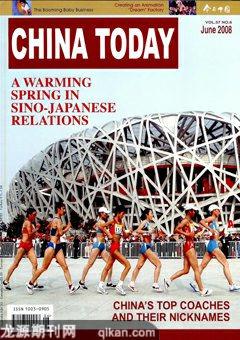Guangzhou:Adventurers’Paradise
staff reporter ZHANG XIWEN
Guangzhou and Shenzhen became the two fastest growing cities. They took only 20 years to complete the wealth accumulation of modern metropolises.
Starting in the mid-8th century, an ocean shipping route developed from Guangzhou to the Persian Gulf, the Red Sea, the East African coast, and Europe.

IN the late 19th and early 20th centuries, Shanghai was called the “adventurers paradise.” But in the 1980s, Guangdong took over that title.
In 1978, following the implementation of the policy of reform and opening-up, Guangdong Province, which is adjacent to Hong Kong, became the key recipient area for international manufacturing as industries shifted from Hong Kong, Macao and Taiwan. Guangzhou, the provincial capital of Guangdong, and Shenzhen became the two fastest growing cities. They took only 20 years to complete the wealth accumulation of modern metropolises, a record not only on the Chinese mainland, but also worldwide.
Guangdong became the destination of the “gold rush.” Millions of people migrated to Guangzhou and Shenzhen from the interior. This differed from later “tides of migrant workers” in that most of the migrants were intellectuals. Private shops and companies mushroomed in Guangzhou, and anew “individual economy” appeared, a new phenomenon compared with state-owned and collectively owned enterprises. After that, “10,000-yuan households” and “millionaires” appeared in Guangdong, bringing the concept of wealth to the Chinese mainland.
Meanwhile, European and American fashion entered Guangzhou via Hong Kong. Although old concepts still had great influence, certain brave young people began to wear dynamic jeans and fashionable T-shirts. “I remember it was in 1983 when jeans and fashionable T-shirts hit the market on a large scale. At that time there were not many brand names, mainly the Apple brand. Most were smuggled in from Hong Kong, and the prices were not high, 10-20 yuan apiece. At that time, many people came to buy jeans. It took more than one hour to walk through the 800-meter-long Gaodi Street, lined with jeans dealers. Many buyers came from other parts of the country. Some were tourists, and many were wholesalers. Gradually a wholesale market came into being,” recalls Lu Jianwei, who now owns two large garment enterprises in Guangzhou.
Historically, Guangzhou was a prosperous city by the Pearl River. In ancient times, it was the largest foreign trade port. Starting in the mid-8th century, an ocean shipping route developed from Guangzhou to the Persian Gulf, the Red Sea, the East African coast, and Europe. The worlds longest ocean-going navigation route before the 16th century mainly transported silk, porcelain and perfume. According to historical records, Guangzhou was an international harbor handling foreign ships. In the downtown area, there were shops owned by foreign merchants, and residential areas for foreigners, especially Arab merchants, who built mosques in Guangzhou. Currently, the city has four mosques.

By 1860, Guangzhou accommodated more than 200 foreign ships annually, and the tariffs from exports amounted to 1.8 million taels of silver (equivalent to RMB 180 million). Guangzhou also produced a number of world-class men of wealth. For instance, in 1834, a wealthy man named Wu had assets valued at 26 million taels of silver, for which he was called the “Number One” man of wealth in the world. In 2001, the Wall Street Journal Asia named Wu one of the top 50 richest people in a millennium. On Changshou Road, Liwan District of Guangzhou people can see the sites of big companies and residences of business tycoons from the 19th century.

